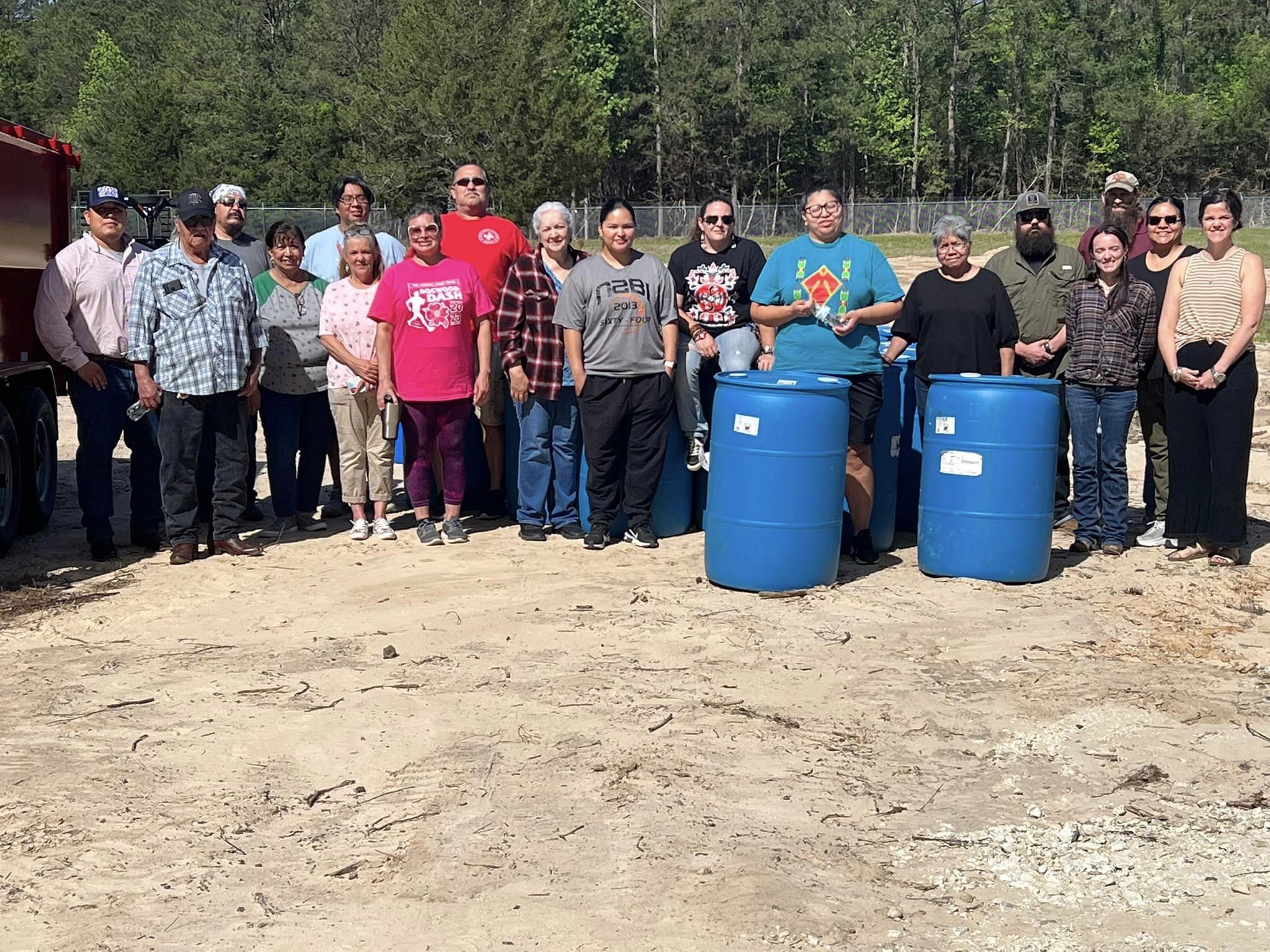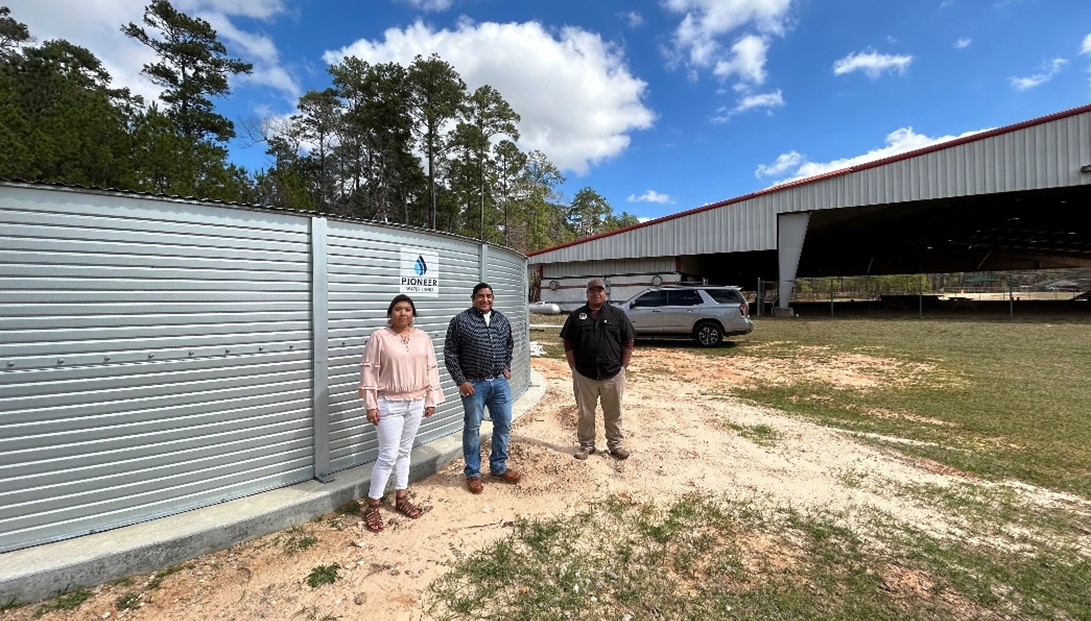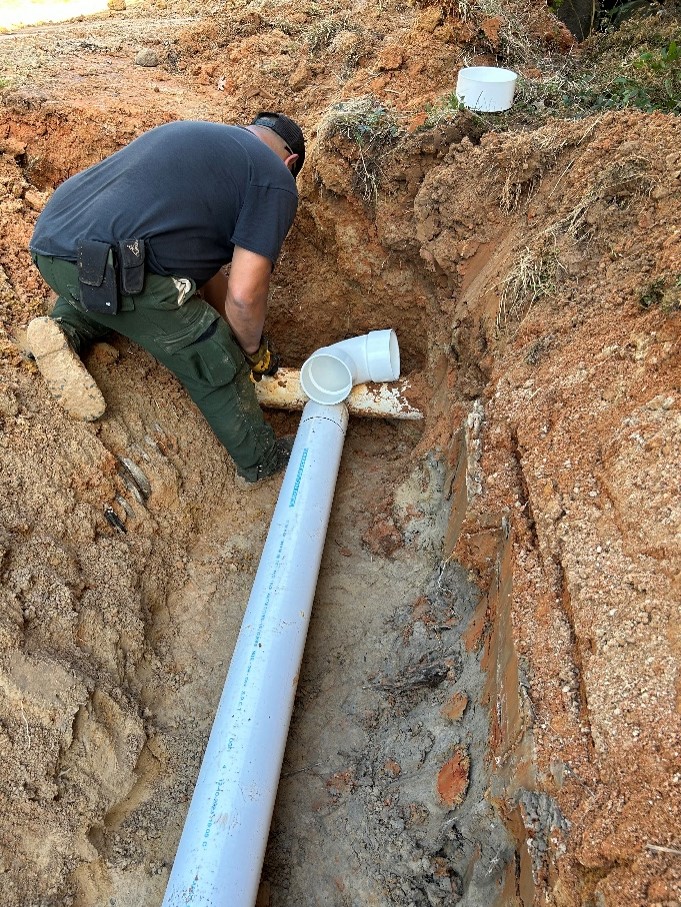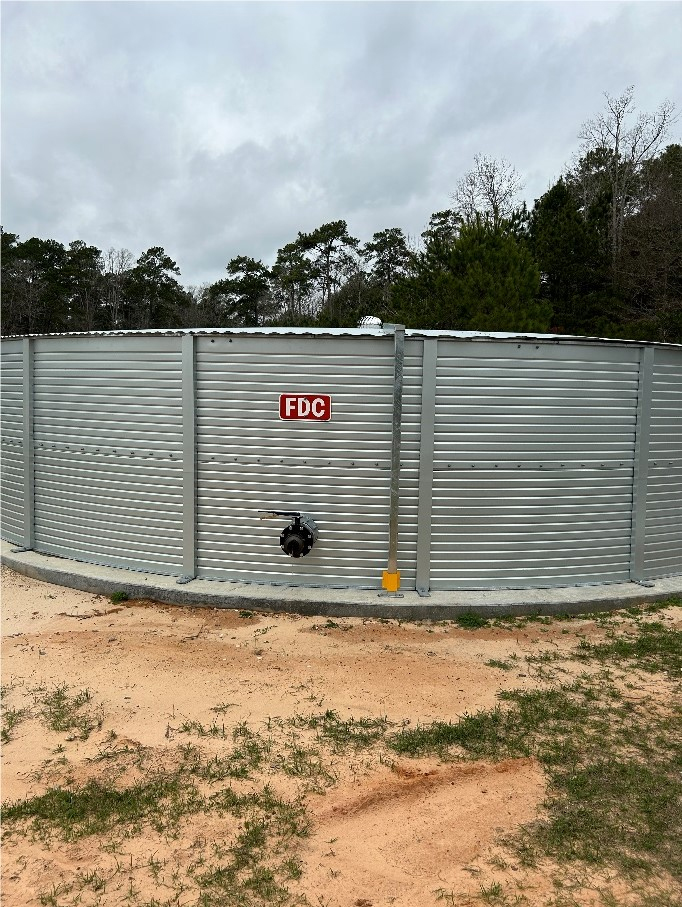Increased variability in rainfall patterns and more frequent extreme heat events are posing new challenges for farmers and ranchers in the Southern Great Plains. Renewed interest in the ancient technique of rainwater harvesting prompted the Southern Plains Climate Hub (SPCH) to partner with the Bureau of Indian Affairs Tribal Climate Resilience Southern Plains Region and Texas USDA/NRCS to provide demonstrations and information on such systems. Members of the Alabama-Coushatta Tribe of Texas, Absentee Shawnee Tribe of Indians of Oklahoma, Caddo Nation, Wichita Affiliated Tribes, Otoe-Missouria Tribe, Cheyenne and Arapaho Tribes, and Quapaw Nation, as well as the Kaw Nation, Chickasaw Nation, Muskogee Creek Nation, Kiowa Nation, Comanche Nation, and Santa Ana Pueblo in New Mexico participated in workshops and one-on-one consultations. The Climate Hub provided assistance through Mr. Jacob Shaffer (Texas NRCS Detailee with the SPCH) with design of systems tailored to the needs of Tribal partners who anticipate using rainwater harvest and storage to boost water reserves for wildfire control, livestock watering needs, and small-scale horticulture, among other uses. Approximately 150 members of historically underserved rural communities received information or direct support through this program.
 Figure 1: Right side: Kelli Scroggins, Diabetes Education Coordinator Alabama-Coushatta; Jacob Shaffer, Texas NRCS Detailee with the Southern Plains Climate Hub; Sheena Schemm, Bureau of Indian Affairs Tribal Climate Resilience; Ryan Morrison, BIA Forester, provide rain barrels to participants after the first Rainwater Harvesting/Pollinator Workshop for Tribal members of the Alabama-Coushatta Tribe of Texas in Livingston, Texas.
Figure 1: Right side: Kelli Scroggins, Diabetes Education Coordinator Alabama-Coushatta; Jacob Shaffer, Texas NRCS Detailee with the Southern Plains Climate Hub; Sheena Schemm, Bureau of Indian Affairs Tribal Climate Resilience; Ryan Morrison, BIA Forester, provide rain barrels to participants after the first Rainwater Harvesting/Pollinator Workshop for Tribal members of the Alabama-Coushatta Tribe of Texas in Livingston, Texas.
The system installed by the Alabama-Coushatta Tribe of Texas will allow them to harvest and store 65,000 gallons of rainwater which will be used for wildfire mitigation, irrigation of a community garden, and dust abatement in an arena adjacent to the Veteran’s Pavilion. This building, used for community events, will serve as the rainwater collection structure (see figures below). The cost of materials for this project was funded through a grant awarded by the Bureau of Indian Affairs Southern Plains Region (BIA) and the labor was furnished by Alabama-Coushatta Wildland Fire Fighting Crew Tribal members. Currently, the water storage facility has collected 50% capacity (32,500 gallons) from recent rainfall events. Education and demonstration of assembly and installation of smaller-scale systems for household rainfall harvest were provided as part of this program. Tribal members attending the outreach event received a free rainwater barrel furnished by the BIA. Kelli Scroggins, an Education Coordinator with the Tribe, noted that ‘people are still talking about the rainwater harvesting event you put on for the Tribe’ in a message to Mr. Shaffer. Ms. Scroggins added ‘we are excited about the large-scale rainwater harvesting at the Veteran’s Pavilion and are looking forward to continued collaboration with you and your peers’.
 Figure 2: Right to Left; Gesse Bullock-Tribal Fire Management Specialist; Elliot Abbey-Deputy Tribal Administrator for Community Development; Selena Battise-Tribal Administrative Assistant who oversaw the installation of the 65,000-gallon storage tank seen in the foreground. Rainwater is harvested from the adjacent Veteran's Pavilion in the background.
Figure 2: Right to Left; Gesse Bullock-Tribal Fire Management Specialist; Elliot Abbey-Deputy Tribal Administrator for Community Development; Selena Battise-Tribal Administrative Assistant who oversaw the installation of the 65,000-gallon storage tank seen in the foreground. Rainwater is harvested from the adjacent Veteran's Pavilion in the background.
 Figure 3: Installation of wet system that conveys harvested rainwater to the storage tank.
Figure 3: Installation of wet system that conveys harvested rainwater to the storage tank.
 Figure 4: Water outlet valve clearly marked for use by the fire department.
Figure 4: Water outlet valve clearly marked for use by the fire department.
A second completed 40,000-gallon rainwater harvesting system by the Absentee Shawnee Tribe of Indians of Oklahoma at a newly developed youth camp will use the Youth Dining Hall as the collection surface. Water will be used for fire safety, irrigation, and youth education regarding water conservation. Funding for this project was also furnished by the Bureau of Indian Affairs Southern Plains Region and designed by SPCH Texas NRCS Detailee Jacob Shaffer.

